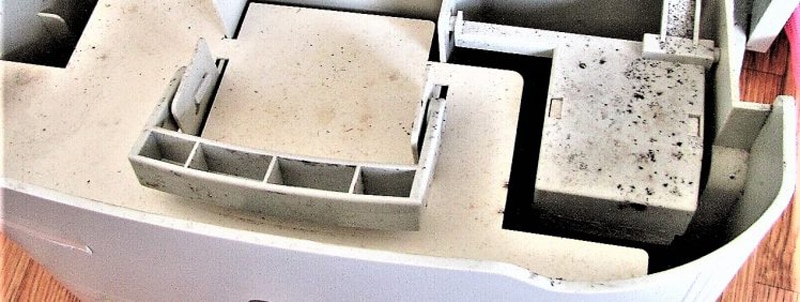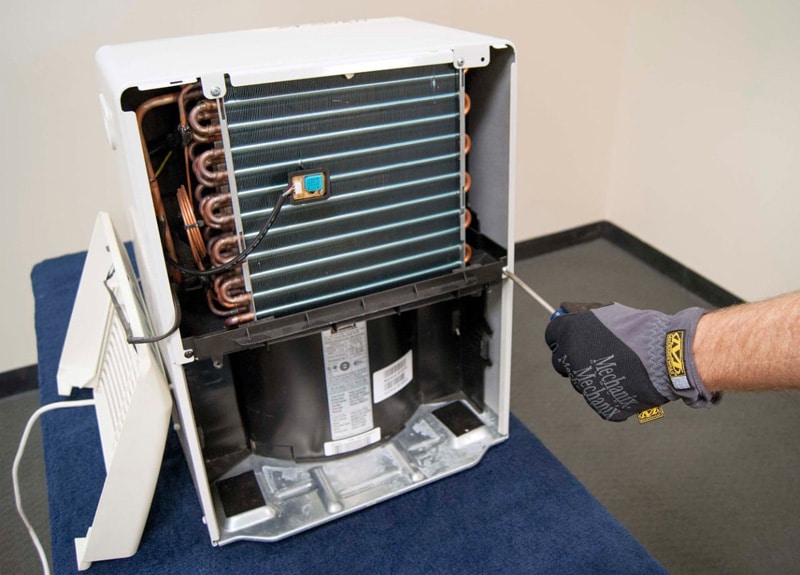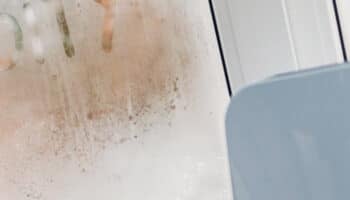How can you prevent mold from forming in your dehumidifier? Here are 5 easy steps you can try.
Dehumidifiers are life-savers. Whether you live in an extremely humid area or just want to make sure your basement is always dry and free of mold, you’ll agree with me when I say that our lives without them would be much more complicated.
Not only are they relatively inexpensive and easy to use, but also highly independent machines that rarely ever require our attention to work normally.
What is there not to love?
That being said, a fail proof model is yet to be invented. I promise that, as soon as one hits the market, I’ll be the first to let you know, but until then, there’s always the possibility of malfunction, or, in your case, mold formation.
If you think about it, it’s even ironic that an appliance that has been designed to prevent this fungus from taking hold, is ridden with it. Regardless of how long you’ve been experiencing this issue, there’s probably just two questions on your mind.
Why is this happening? And can I fix it?
While there’s no single culprit to this situation, there are certainly many things you can do to both prevent this from happening, and deal with the problem once it has manifested itself.
However, in order to do that, you need to know exactly what to look out for.
This is why I’ve prepared the list below, where you’ll find the most common causes to this occurrence, and the simplest steps you can take to address them.
Are you ready? Let’s go!
Cleaning a Moldy Dehumidifier
I know what you’re going through, I really do. I’ve had this issue happen to me, and I know that the smell isn’t great. In fact, it can be extremely displeasing.
Having said that, as eager as you may be to get rid of the unwanted mold, it’s very important that we go about the troubleshooting process in a detailed and orderly manner.
Failing to do so will not only make you waste precious time and money, but also put you at risk of doing further damage to the appliance. I’m sure you don’t want to cause a technical fault while trying to clean your machine, right?
Patience always pays off, so bear with me. We’ll get to the bottom of this.

#1 Clean the Filters Regularly
Dirty filters are great for mold formation
This might come as no surprise to you, but making sure to keep your filters as clean as possible is a great way to prevent the formation of mold in the appliance.
As you know, this part is responsible for catching any debris coming from the air as it’s sucked into your machine.
With the passing of time, it can become excessively dirty or obstructed. This, combined with high levels of moisture, makes for the perfect mold formation conditions.
Most manufacturers recommend that you clean your filter every month, and replace it every three to six months. Moreover, this recommended frequency is greatly reduced to between one and two months if you suffer from any respiratory conditions, such as asthma or allergies.
Solution: Accessing your filter should not be too complicated. In most models, all you have to do is remove the front outer panel in order to expose the part.
Once you have successfully removed it from your appliance, you can scrub it with dish soap under running water, let it dry completely, and then vacuum off any remaining debris.
If you have any doubts, and are a visual person like me, there are several online videos that you can check out, and follow along step by step.
If you want to get any replacement part – or see how much one would cost – click to enter your model number in the search bar below. Our partners at AppliancePartsPros stock almost every part with free guides on how to install them.

#2 Empty the Reservoir Often
Do not rely solely on your pumps
Provided that you have a model with a pump, this might not be your problem, but you should still read this in case it’s malfunctioning.
As you know, mold loves water and excessive humidity. This is why it can always be found in basements and other environments of the sort. Believe it or not, failing to empty and clean your reservoir often, can contribute to the formation of this fungus.
And while most dehumidifiers are built with pumps to empty the reservoir continuously, the process might still need your intervention to be done properly.
Solution: Carefully unplug your appliance, and let it cool down. Once a couple of minutes have passed, delicately remove the reservoir, empty it, and clean it.
You can do this by only using dish soap, and running water. But, if you want the full cleaning experience, you can also use a mixture made up of equal parts of water and white vinegar for complete disinfection.
Doing this at least once a month should prevent the formation of mold in the future.
#3 Descale It
Water and vinegar are miraculous
In case you’re wondering what descaling means, relax, it’s nothing overly complicated! This term is just a fancy name for using water and white vinegar to remove excess sediment buildup, or mold, from your dehumidifier’s internal components.
In the previous point, we covered how you would go about this when cleaning your reservoir. But how you can apply this disinfection method to your pump, and your machine’s tubes?
Simple, by letting it run normally.
Solution: Prepare the aforementioned mixture of water and vinegar, and pour it into the empty reservoir. Once you have done that, set the humidifier to run as you normally would until the water has been nearly pumped out completely.
This should remove any sediment buildup and mold from your internal components.
Descaling should always be treated as a preventive measure, rather than as a corrective one. However, if there’s already mold inside your unit, this method can clear it up.
#4 Clean the Coils
Keep your coils sparkling clean
I can’t stress this enough. Giving your appliance proper maintenance is essential to extending its lifespan and preventing the formation of mold.
This is not only true for your dehumidifier, but for all other appliances you own as well.
The coils inside your unit are essential to its normal operation. If you’re not sure what they do, I’m happy to give you a brief explanation.
Normally, dehumidifiers have two coils, one that is hot, and one that is cold. The latter condenses the air that’s been sucked in, removing the excess moisture, while the former dries it, and releases it back into the room.
Being components that are constantly in contact with humidity, it should come as no surprise that they can exhibit signs of mold formation rather quickly.
Solution: You’ll have to carefully disassemble your appliance to gain comfortable access to your coils.
The process for exposing and cleaning these components should be very similar to that of changing your filter. However, if you want a detailed walkthrough, there are several online resources at your disposal.
Cleaning your coils at least once every two months should be enough to prevent the formation of mold.
That being said, the weather conditions in your area, could make it necessary to increase the cleaning frequency.

#5 Consider a Backup
You might need more than one dehumidifier
This is not very common, and it’s probably not your problem unless you live in an extremely humid area. But we want to cover all bases, right?
If none of the solutions above worked, there’s a chance that your dehumidifier might be overwhelmed by the amount of moisture in the room you’ve set it in.
This is much more likely if you’re trying to dry a room that is larger than the recommended dimensions for your specific unit. Sometimes, one machine is not enough, and you might need to buy one or two more depending on your weather conditions, and room dimensions.
Solution: The best way to tell whether this is your problem is by using an air quality meter. While these devices are normally used for testing the efficiency of air purifiers, some models can also tell you the humidity percentage in a specific area.
By using one of these meters, you’ll be able to see if the moisture levels are too high, even while running your dehumidifier. If this is the case, both your appliance, and your furniture are at risk of growing mold.
How to Prevent Mold Formation in the Future (Recap)
As you know, prevention is always better than correction, so here’s a recap of the best practices you can take advantage of:
- Clean your filter, coils, and reservoir regularly
- Descale your pumps
- Monitor the humidity in the room
These good habits are not complicated or time-consuming, and will definitely prevent your dehumidifier from suffering from mold-related malfunctions.
Conclusion
To have your dehumidifier running in tip-top shape is essential to your health, and the preservation of your home, so you should try and prevent the formation of mold in it at all costs.
Luckily, as I hope you’ve learned in this piece, simple and quick actions can go a long way in keeping your unit working perfectly, and free of unwanted fungi, and sediment.
Taking the time to clean your components properly, will make a night and day difference, and extend your dehumidifier’s lifespan significantly.
Thank you so much for sticking with me all the way to the end. If you found this article helpful, why not keep the learning going through our other incredible resources below?
Mold begone!







